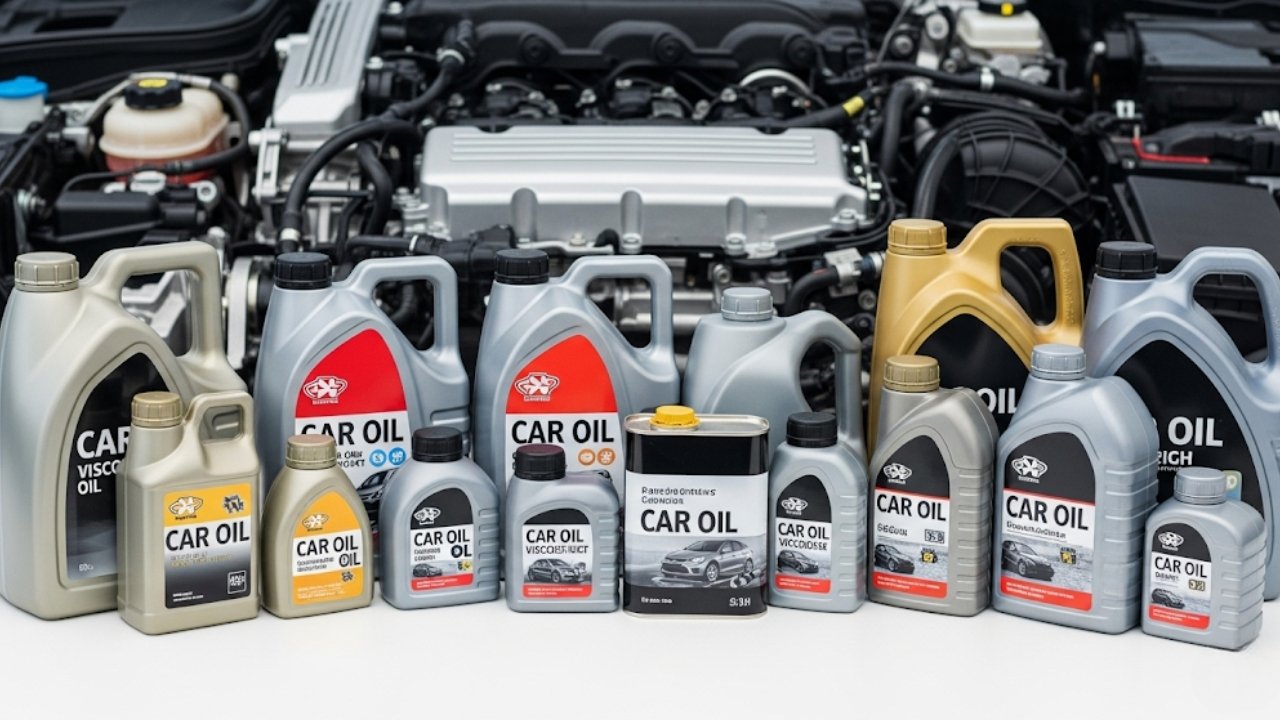What Oil Do I Need for My Car? A Friendly Guide

You’re not alone if you’ve ever stood in the auto aisle staring at a hundred bottles of oil, feeling completely lost. I’ve been there too. It’s a common scene—your dashboard light blinks, or you hear a weird noise under the hood, and suddenly, the big question hits: “what oil do I need for car?”
It might seem like a small detail, but choosing the right oil for your car is as important as picking the right kind of food for your body. Use the wrong one, and over time, it could cause trouble under the hood. But with the right oil, your engine runs smoother, lasts longer, and stays happy—even on the hottest summer day or the coldest winter morning.
Let’s break this down in a way that feels like chatting with a friend over tea. I’ll walk you through the essentials—from understanding oil types to decoding your owner’s manual—so you never have to feel overwhelmed again. Trust me, once you learn it, it’s like knowing your favorite recipe by heart.
Why Oil Matters More Than You Think

Here’s what the right motor oil does:
-
Lubricates engine parts so they move without friction.
-
Cools down the engine by carrying heat away.
-
Cleans by carrying away dirt and sludge.
-
Protects against rust and corrosion.
-
Improves fuel efficiency, saving you money.
Using the wrong oil is like wearing winter boots to the beach—your car might still run, but it’s not going to be comfortable or safe. So asking “what oil do I need for car” is not just smart—it’s necessary.
Understanding Oil Types: What’s On That Label Anyway?
Walk into any parts store and you’ll see words like synthetic, conventional, and high-mileage on those oil bottles. It feels like a chemistry class, right? But don’t worry—here’s a simple breakdown:
| Oil Type | Best For | Why It Matters |
|---|---|---|
| Conventional Oil | Older cars, simple engines | Affordable, basic protection |
| Synthetic Oil | Newer cars, high-performance engines | Best protection, stable in hot/cold |
| Synthetic Blend | Mix of synthetic and conventional | Middle ground, better performance |
| High-Mileage Oil | Cars with over 75,000 miles | Reduces leaks, protects worn engines |
So, if your car is brand new or you drive long distances, synthetic oil is your best bet. But if your ride’s been around the block a few times, high-mileage oil may give it the TLC it needs.
The main thing is: always check your owner’s manual. It tells you not just what kind of oil to use, but also how often to change it.
What Do Those Oil Numbers Mean?
This is the part that confuses almost everyone. You’ll see labels like 5W-30, 0W-20, or 10W-40. It sounds like some math equation, right? But here’s a super simple way to understand it.
Let’s break down 5W-30:
-
The first number (5W) tells how the oil flows in cold weather. The “W” stands for winter. A lower number = better flow in cold.
-
The second number (30) shows how the oil performs when the engine is hot.
Metaphor Time :
Think of it like honey. In winter, honey thickens. The same happens to oil. You want it thin enough to flow quickly and thick enough to protect parts when hot. So 5W-30 means good flow when cold and strong protection when hot. Simple, right?
That’s why asking “what oil do I need for car” isn’t just about choosing any oil—it’s about picking the oil that flows right for your engine and your climate.
️ Climate and Driving Habits Matter More Than You Think
Let’s say you live in Dhaka, where the heat can turn metal surfaces into frying pans. Or maybe you’re up in Canada with snow covering your windshield half the year. Your location affects the kind of oil your car needs.
If you’re in a hot place, you want an oil that doesn’t thin out too much. Something like 10W-40 can hold up better in high temperatures.
But if it’s freezing out, you’ll need something like 0W-20, which flows easily even when it’s bitter cold.
And your driving style matters too:
-
Stop-and-go driving? You need better protection against sludge buildup.
-
Long highway drives? Look for oil with long-lasting stability.
-
Hauling or towing? Your engine’s under stress, so go full synthetic.
What oil do I need for car? It depends not just on the car—but on you, your habits, and your environment.
How to Check What Oil Your Car Needs
Still unsure? Here are quick ways to check what motor oil your car uses:
-
Owner’s Manual – It’s your car’s Bible. It’ll say something like: Use SAE 5W-30 Full Synthetic.
-
Oil Cap – Open the hood and check the oil filler cap. Sometimes it’s printed right on it.
-
Automaker’s Website – Most have lookup tools.
-
Mechanic or Dealership – Ask them directly if you’re unsure.
Here’s a tip I learned the hard way—never guess the oil type. I once thought I could just use any oil “as long as it was new.” Big mistake. My car ran rough for weeks until I flushed it and used the recommended oil.
Common Myths About Motor Oil Debunked
Let’s bust a few myths while we’re at it:
-
“Thicker oil is always better.” ❌ Not true. Too thick, and it won’t flow well, especially in winter.
-
“You need an oil change every 3,000 miles.” ❌ Modern engines and synthetic oils last 5,000 to 10,000 miles.
-
“You can mix oil types.” ❌ Don’t do it unless it’s an emergency. Stick to one type for consistency.
So next time someone says, “Just use the thickest one you got,” smile politely and go with what your engine actually needs. It’s smarter and safer.
How Often Should I Change My Oil?
You’ve got the right oil, but how often do you actually need to change it?
There’s no one-size-fits-all answer. While the old-school rule was every 3,000 miles, that’s changed a lot with modern engines and synthetic oils. Most cars today can go 5,000 to 7,500 miles between oil changes. Some even reach 10,000 to 15,000 miles if they use high-end synthetics.
But here’s the catch: it depends on how you drive.
Let me share a quick story. A friend of mine only drives 3 miles a day to work. That short trip doesn’t let the oil heat up enough to burn off moisture. Result? Her oil gets dirty faster than someone cruising the highway every day.
So consider this:
-
City driving = more frequent changes.
-
️ Highway driving = longer oil life.
-
️ Extreme heat or cold = stick to the lower range.
-
Towing/heavy loads = change oil more often.
Always follow your car’s maintenance schedule and check the oil level once a month. It only takes 2 minutes, and it could save you thousands in repairs.
DIY vs. Professional Oil Change: Which One’s Better?
Now that you know what oil you need for your car, you might wonder—should I change it myself or let the pros handle it?
Changing Oil Yourself
If you love a good hands-on project, DIY oil changes can be:
-
Cheaper: You only pay for oil and a filter.
-
️ Educational: Learn how your car works.
-
♂️ Satisfying: There’s a strange joy in doing it yourself.
But it also comes with:
-
A mess (especially if you drop the oil pan bolt—ask me how I know ).
-
The need for tools like a jack, wrench, oil pan, and gloves.
-
Proper disposal of used oil.
Getting It Done Professionally
-
⏱️ Faster and cleaner.
-
Mechanics may catch other issues while they’re under your hood.
-
You get a record, which helps with resale value.
If you’re unsure or don’t have the tools, there’s no shame in letting a pro handle it. The point is keeping your engine healthy, not proving something. And if you’re asking “what oil do I need for car,” a shop can help you get the exact match.
️ How to Read Oil Labels Like a Pro
Oil bottles are packed with info. Let’s decode what you’re seeing so next time, you can walk down that aisle like a boss.
-
Viscosity rating (like 5W-30): Tells you how the oil flows in hot/cold.
-
API certification (like “SN” or “SP”): Tells you if the oil meets industry standards.
-
ILSAC starburst or donut logo: Means it passed energy-saving tests.
-
Synthetic vs. Conventional: Check for the type right on the label.
-
OEM approval: Some bottles say “approved for BMW/Mercedes/etc.”
Look for the label that matches your owner’s manual recommendation. That’s the golden rule. And if you ever see a bottle without certification marks, put it back—your engine deserves better.
Top Motor Oil Brands Trusted by Drivers
Let’s face it—brand matters. While all certified oils do the job, some brands go the extra mile in research, performance, and protection.
Here are a few tried-and-true favorites:
| Brand | Why Drivers Love It |
|---|---|
| Mobil 1 | Full synthetic, used by many performance cars |
| Castrol | Known for engine cleanliness and sludge prevention |
| Valvoline | Affordable and great for high-mileage cars |
| Pennzoil | Made from natural gas, clean-burning and efficient |
| Royal Purple | Great for racing and performance vehicles |
When you’re asking “what oil do I need for car,” think of it like choosing a good skincare product. You want quality ingredients, proven results, and a brand that suits your budget and lifestyle.
Where to Buy the Right Oil (Online or In-Store?)
You can find engine oil almost anywhere these days—from supermarkets to e-commerce giants. But which place is best?
In-Store (AutoZone, Walmart, Local Auto Shops):
-
Instant access, helpful staff.
-
Easier returns.
-
You can check the bottle in person.
Online (Amazon, RockAuto, TireRack):
-
Wider variety.
-
Better deals, especially in bundles.
-
Doorstep delivery—super handy if you’re busy.
Pro Tip: If you’re ordering online, double-check the specifications. Some sellers might offer older formulations or off-brand versions that don’t meet your car’s needs.
❓ Frequently Asked Questions (FAQs)
1. Can I use synthetic oil in an older car?
Yes! Many older engines benefit from synthetic or high-mileage blends. Just make sure there are no leaks beforehand.
2. What happens if I use the wrong oil?
It could cause poor performance, increased engine wear, or in extreme cases, engine damage. Always use what the owner’s manual says.
3. Is synthetic oil really worth the extra money?
Absolutely—especially for newer engines. It lasts longer, performs better in temperature extremes, and protects your engine more effectively.
4. Can I switch from conventional to synthetic oil?
Yes. Most engines can handle the switch without any problem. Just do a full oil change when switching.
5. How do I know if my oil needs changing?
Look for signs like:
-
Dark or gritty oil on the dipstick.
-
Engine noise.
-
Decreased fuel economy.
-
Oil change light on your dashboard.
6. Can oil go bad sitting in the engine?
Yes. Even if you don’t drive much, oil breaks down over time. Change it at least once every 6–12 months.
7. What if my car burns oil fast?
You might have an internal leak or worn engine parts. Use high-mileage oil and get it checked.
8. How much oil does my car need?
It depends. Small cars usually need 4–5 quarts, while trucks and SUVs might need 6–8 quarts. Your manual has the exact info.
❤️ Final Thoughts: Take Care of Your Car, and It’ll Take Care of You
Finding the answer to “what oil do I need for car” may seem small, but it speaks volumes about how much you care for your vehicle. Oil may not be glamorous, but it’s essential—like water for our bodies or love for our souls.
Don’t overthink it. Just follow the signs, trust your manual, and listen to your car. Whether you drive a shiny new ride or an old reliable workhorse, giving it the right oil is a gift that keeps on giving.
And hey, next time someone asks “what oil do I need for car?”, you’ll have more than an answer—you’ll have a story, a memory, and maybe even a smile.






